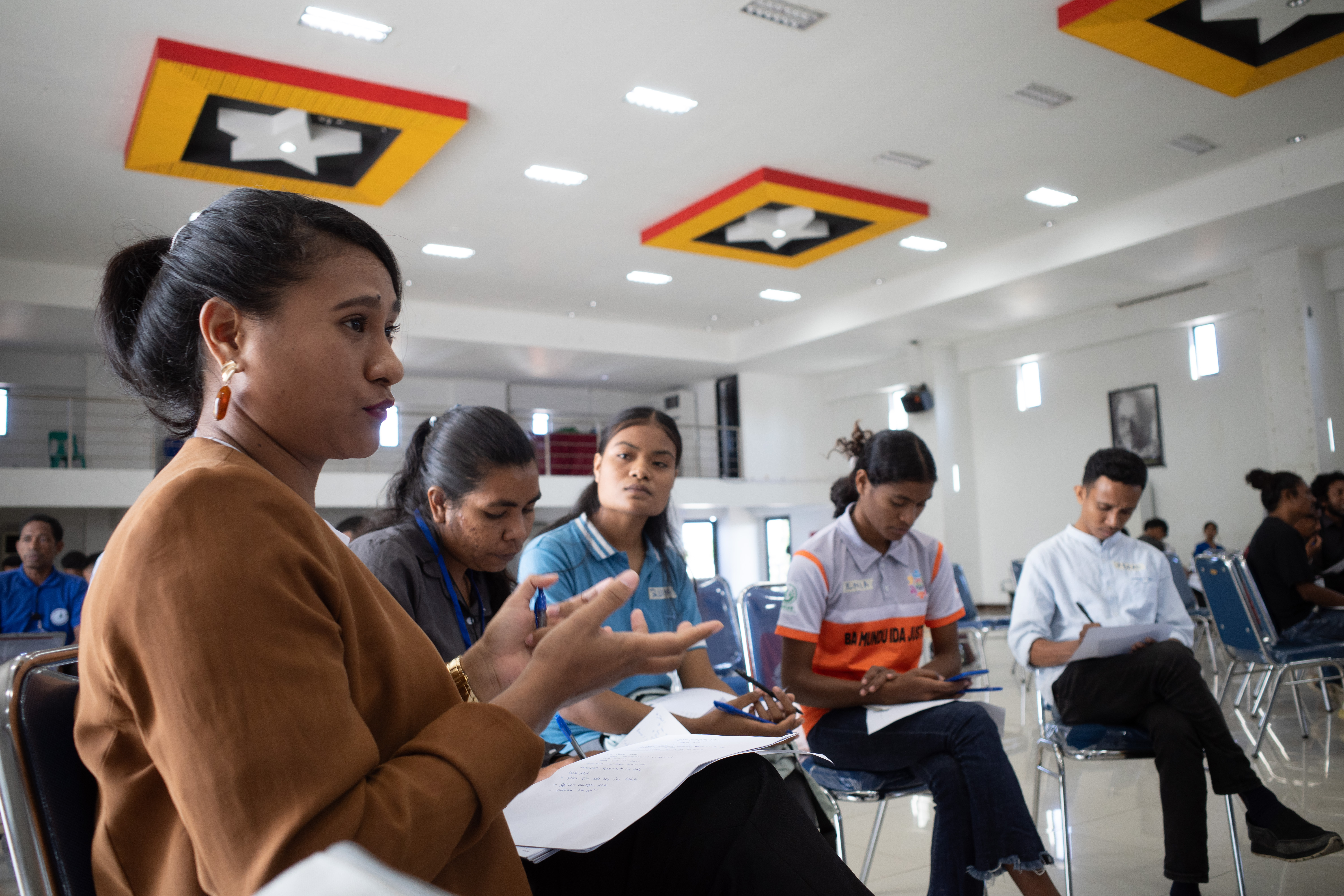Timor-Leste has a long history of group conflict. In the Portuguese colonial period, gangs named Moradores were used to repress the local population. In the 1980s and 1990s, martial arts groups emerged – a combination of groups introduced from Indonesia to control the local population and others that had developed within Timor to resist the occupying oppressors.
Clashes between martial arts and ritual arts groups have been a consistent feature in Timor Leste since the restoration of independence. Following the crisis of 2006-2008, sporadic and violent conflicts involving these groups have continued until the present day. While martial arts groups in Timor-Leste have roots in pencak silat (various traditional martial arts in several Southeast Asian areas), martial and ritual arts groups have become synonymous with political or inter-communal violence — sometimes affecting the safety and security of entire communities.
In 2018, AJAR founded the “Human Rights and Social Justice School” program to equip university students and young NGO members from across Timor-Leste to become human rights defenders, community researchers, and organisers.

Students learn methods of Participatory Action Research (PAR), including the “House of Peace” tool, to analyse the current peace and violence introduced during the Peacebuilding and Transitional Justice program. The tools were crucial in AJAR’s study into Timor Leste youth, peace, and security: “Our Young People Can Also Lead in Contributing to Peace”. Targeting vulnerable youth and youths frequently involved in conflict empowers participants to become agents of change through reflection and learning for action.
To commemorate the International Youth Day on August 11-12, 2023, young people from various martial and ritual arts groups across 13 towns in Timor Leste came together for a two-day workshop focused on examining the root causes of both longstanding and emerging conflicts through the tool of the “Tree of Conflict” and “Tree of Justice”, or “Tree of Peace.” They included the groups called the Persaudaraan Setia Hati Terate (PSHT), Ikatan Kera Sakti Putra Timor-Leste (IKS), Splendid Children of Timor (KORKA), 77, Youth Off the Streets, Rotaract Club of Dili, Chega! Youth Ambassadors, and the Centre for Promoting the Human Rights Movement (SBHMDU). They then raised their recommendations on youth involvement in peace and development.
Figure 2 and 3: The “Tree of Conflict” and “Tree of Peace”, results from youth group discussions, August 11-12, 2003. (AJAR Timor Leste)
Participants were preoccupied with the misconception in their society that “generalised young people as actors for conflict.” A Chega! The Youth Ambassador said, “young people are not criminals, but actors for peace.”
“We from the martial and ritual organisations are saddened that we are seen as evil in the eyes of the government. They can’t continue to call us names when they are the ones who, every year, promise policies and Government response, and then in the end, when you haven’t fulfilled these promises, you turn around and still demonise us.” — Ritual Arts member.”
Greatly improved access to quality formal and informal education was a central topic of discussion, with participants claiming this is a main requirement for achieving youth contributions to peacebuilding and the development of their nation. Many said they require education based on Timor Leste’s context and market requirements, not foreign languages and histories.
Using creative and participatory methods such as the “Tree of Conflict”, “Tree of Justice” or “Tree of Peace”, and pecha kucha, participants highlighted the actors responsible for violent conflicts, including political leaders, state, government, civil society, youth, martial/ritual arts groups, family and individuals. These were the same actors the youth expected to take responsibility for change and peace.
Youth from martial/ritual arts groups also explained they felt marginalised because of biases against them from the government and the public. They felt their voices were ignored and exploited as scapegoats for various political agendas.
Participants also reflected on various peacebuilding mechanisms and the role of the CAVR (Timor-Leste Commission for Reception, Truth and Reconciliation). The main issue was how martial arts groups and youth minority groups could feel a sense of ownership in the efforts of peacebuilding and others in society.
Director of Centro Nacional Chega!, Hugo Fernandes, reaffirmed the role of young people in the national struggle, stating, “In 1975, leaders were still young while participating in the struggle, so the nation was established by a significant will and participation of youth in self-determination.” Reminding the participants that the CAVR specifically recommended that the Government should ensure youth participation in all sectors so that young people can express their talents and creativity, including the skills they have to contribute in art and culture.”
The workshop results informed direct dialogues with relevant ministries, state institutions, and stakeholders on youth and peace issues. The youth were provided space for direct talks with officials and representatives of the Ministry of Youth and Sports/Culture, National Chega! Centre (CNC), National Council for Youth Timor Leste (CNJTL), Timor Leste NGO Forum (FONGTIL), and Alumni of the Youth Parliament (APFTL). In the dialogue, the Secretary of State for Youth and Sports, Nelio Isaac, recognised certain parties (oknum) who abused the name of martial arts groups to create conflict in different places.
The President of the Regulatory Commission of Martial Arts (KRAM) also acknowledged that individual problems caused conflicts within martial arts groups. This factor highlighted the importance of brotherhood within both martial arts and ritual arts groups.
This activity is part of the #PeacebuildingandTJ project to promote accountability for peace through community-led transitional justice with a focus on institutional reform and non-recurrence. Held in collaboration with Asia Justice and Rights, The Commission of Disappeared and Victims of Violence Aceh (KontraS Aceh – Indonesia), Cross-Cultural Foundation (CrCF – Thailand), Solomon Islands Trauma Healing Association (SITHA – Solomon Islands), and Asosiasaun Chega! Ba Ita (ACbit – Timor-Leste), was made possible with the support of the European Union.